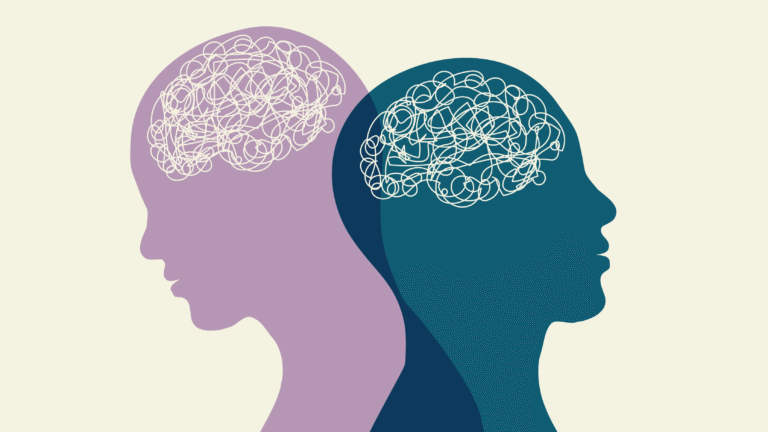Autism, often referred to as Autism Spectrum Disorder (ASD), is just that—a spectrum. This means that it presents itself in various forms and intensities, making each individual’s experience unique.
Beyond the core features of autism, a substantial facet that warrants more focus is its association with co-occurring psychiatric conditions. These conditions not only play a pivotal role in shaping the well-being of an individual but also influence the overall mental health landscape.
For anyone delving into the realm of autism, a comprehensive exploration is enriched by accessing resources. Platforms like PapersOwl offer a trove of autism essays and topics ideas, providing both inspiration and free access to a wealth of knowledge. It is describing challenges and possibilities for autism disaster people.
Most Common Co-occurring Conditions in Autism
For those navigating the waters of the autism spectrum, understanding associated conditions is imperative. These conditions aren’t merely additional challenges; they’re woven intricacies that define their distinctive experiences.
The Complex Tapestry of Co-occurring Conditions
Here is a table representing “The Complex Tapestry of Co-occurring Conditions”:
| Condition | Description |
| Anxiety | Elevated anxiety levels in individuals with autism. |
| ADHD (Attention Deficit Hyperactivity Disorder) | Impulsiveness, inattention, and hyperactivity often co-occur with autism. |
| Bipolar Disorder | Emotional fluctuations from depressive lows to manic highs. |
| Clinical Depression | Sustained feelings of disappointment and reduced interest in activities. |
| Down Syndrome | Genetic anomaly leads to learning disabilities and distinctive physical attributes. |
| Eating Disorders | Illnesses like anorexia or bulimia that affect eating habits. |
| Fragile X Syndrome | Genetic disorders cause intellectual impairments. |
| Intellectual Disability | Challenges in intellectual functioning and daily tasks. |
| Learning Disabilities | Difficulties in specific learning areas, such as reading or math. |
| Sensory Processing Disorder | Difficulty processing sensory information. |
| Tics and Tourette Syndrome | Uncontrolled movements or sounds. |
This table provides a concise overview of each co-occurring condition and its associated characteristics.
Medical Treatment and Sensory Integration
Beyond identifying co-occurring conditions, the path to enhancing mental health also involves effective treatment modalities. Medical interventions often serve as the cornerstone, especially when managing conditions like ADHD or bipolar disorder. Medications tailored to individual needs can alleviate symptoms and improve the quality of life.
However, for those on the autism spectrum, sensory integration is equally pivotal. Sensory integration therapy helps individuals respond to sensory stimuli in a more adaptive manner. This therapeutic approach, often facilitated by occupational therapists, focuses on activities that challenge the individual’s sensory processing, aiming for a more balanced and integrated response.
Applied Behavior Analysis (ABA) is a scientifically tested method based on behavioral ideas that are seeking for to enhance specific behaviors and abilities in individuals, maximum commonly used within the treatment of Autism Spectrum Disorder (ASD).
On the other hand, the Early Start Denver Model (ESDM) is an included therapeutic approach tailor-made for young children with autism, aged 12 to 48 months, mixing concepts of ABA with developmental and dating-based totally interventions. Both methodologies, even as rooted in behavioral technology, provide wonderful avenues to aid individuals with autism of their developmental journey.
Applied Behavior Analysis (ABA)
Applied Behavior Analysis (ABA) is a healing method rooted in the concepts of behavior science. It is extensively recognized for its effectiveness in treating Autism Spectrum Disorder (ASD) and is designed to improve specific behaviors and capabilities in people with autism.
ABA entails understanding the connection between a person’s behavior and their environment to broaden interventions that bring about advantageous behavioral adjustments. By breaking down complex responsibilities into smaller steps and the use of consistent reinforcement techniques, ABA remedies goals to assist people with ASD in improving their social interactions, communique, and other vital lifestyle abilities.
Early Start Denver Model (ESDM)
The Early Start Denver Model (ESDM) is an evidence-based intervention designed in particular for children with autism over a long time of 12 to 48 months. It integrates the concepts of ABA with developmental and dating-primarily based procedures. ESDM is introduced within play-primarily based, dating-targeted routines, making it distinct from traditional ABA.
The primary purpose of ESDM is to boost up the developmental trajectory and decrease the signs and symptoms of autism in young children. By focusing on the middle developmental periods, ESDM no longer handiest pursuits to sell ability acquisition in regions like verbal exchange and cognition but also to foster stronger discern-child relationships.
Conclusion
The intricate interplay between autism and co-occurring conditions underscores the importance of a holistic approach to care. Recognizing these conditions, combined with effective medical treatments and sensory integration techniques, paves the way for a brighter, more balanced life for those on the autism spectrum.













